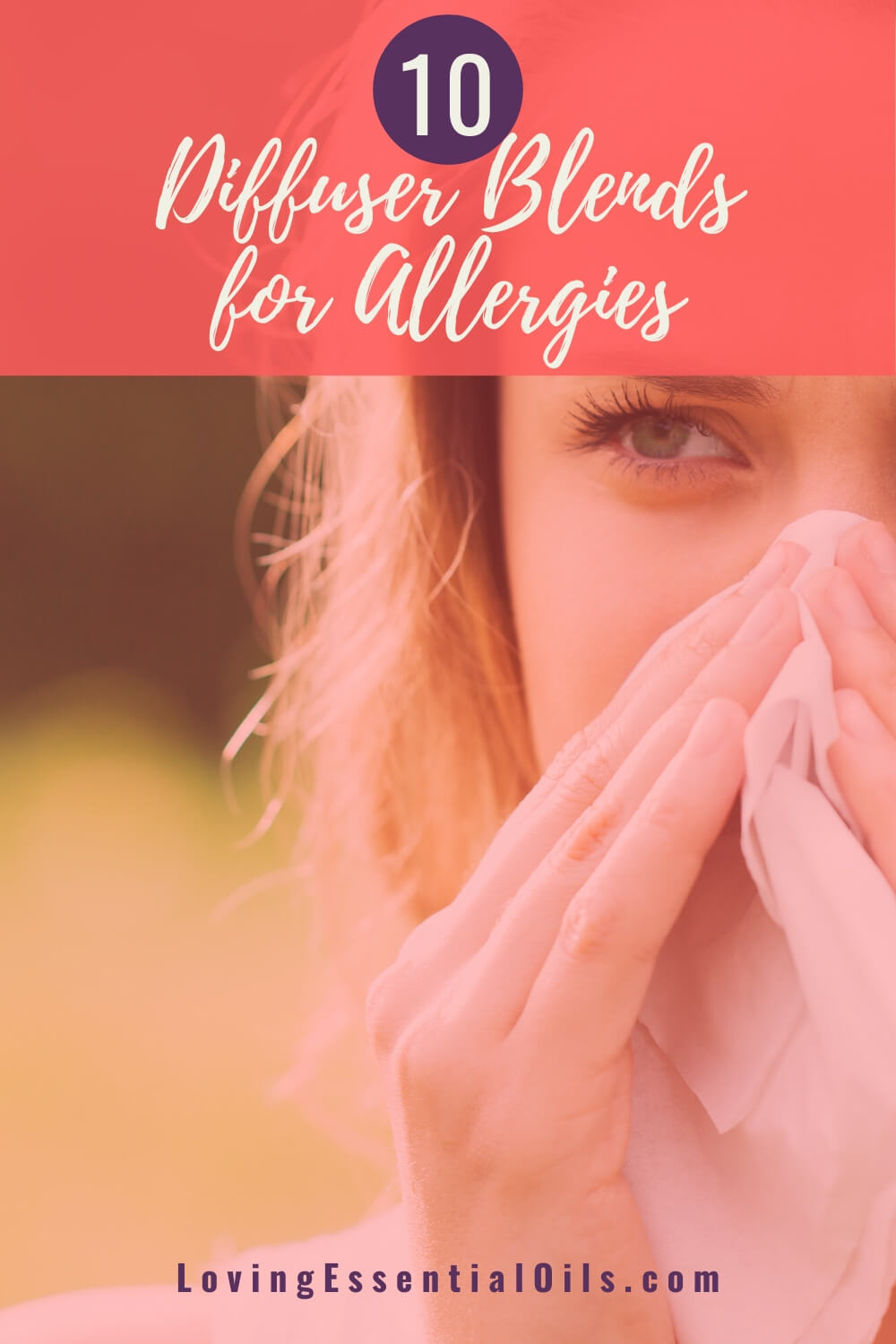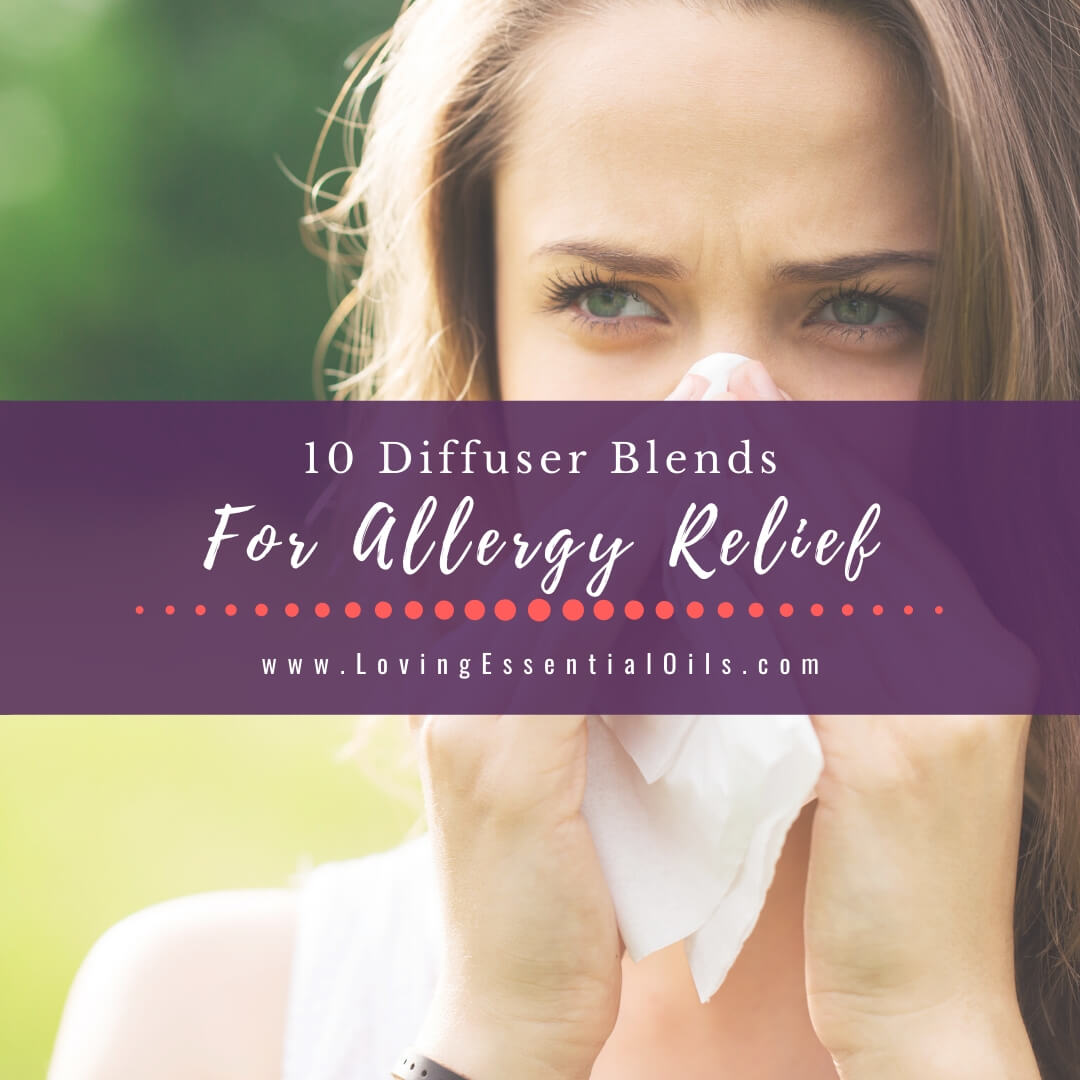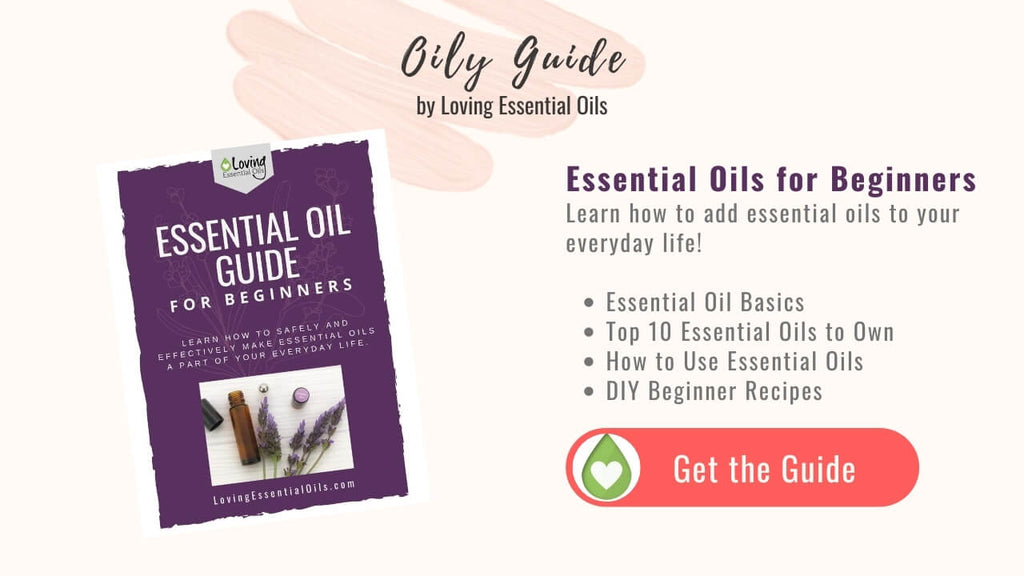The joy and new life that the spring season brings is exciting, the not-so-fun part... allergy season. Seasonal allergies and hay fever can really make life uncomfortable. When looking for natural allergy relief, look to essential oils. Here I share 10 Diffuser Blends for Allergies.
Essential oils can do much more than just create a pleasant scent in your home, they can support allergy symptoms like runny nose, nasal congestion, itchy eyes, and sneezing. If you have coughing and wheezing, it may be allergic asthma.
Essential Oils for Allergy Relief
Dealing with seasonal allergies? Here are some aromatherapy oils for allergy relief:
- Lavender
- Ravensara
- Eucalyptus
- Tea Tree
- Peppermint
- Lemon
- Blue Tansy
- Roman Chamomile
- Black Spruce
- Balsam Fir
- Frankincense
- Laurel Leaf
Are Diffusers Good for Allergies?
Allergies can cause airway inflammation and sinus congestion, the use of an aromatherapy diffuser can assist the respiratory system by offering humidification and benefits from the chosen essential oils diffused.
Common Allergy Triggers:
- Mold
- Dust Mites
- Pollen
- Animal allergens
- Feathers

Common Allergy Symptoms:
With hay fever, when exposed to allergens the body's immune system releases chemicals and these allergy symptoms occur from this release.
- Itchy nose, mouth, eyes, throat or skin
- Runny nose
- Sneezing
- Watery eyes
Common Ways to Avoid Triggering Allergies:
It is best to avoid allergies when possible. You can take precautionary measures to avoid exposure to allergens.
- Check pollen counts before outdoor activities, stay inside during peak pollen times.
- Close windows and outside doors during pollen season (use air-conditioning to cool your home instead).
- Change out air filters in your home as needed.
- Dry your laundry in the dryer instead of hanging them outside.
- Be aware that outdoor pets that come inside can bring in pollen on their fur.
- Keep your bedding, sheets, and pillows clean with frequent washing.
Allergies vs Cold
Navigating the symptoms of allergies versus a common cold can sometimes feel like a guessing game. While both may leave you feeling under the weather, understanding the nuances between the two can help you better manage your health.
Let's explore the subtle yet crucial differences between allergies and a cold to help you identify and address your symptoms effectively.
Allergies Symptoms |
Cold Symptoms |
| Sneezing | Sneezing |
| Runny nose - thin, clear mucus | Runny nose - thick, yellow mucus |
| Itchy, watery eyes | Body aches and pains |
| Itchy, watery eyes | Sore/scratchy throat |
Related Post: Diffuser Blends for Colds
What Essential Oil is an Antihistamine?
Some essential oils have antihistamine properties, meaning they inhibit the physiological effects of histamine. Antihistamine is usually referring to a drug for the treatment of allergies and allergic rhinitis.
Peppermint essential oil contains menthol which decongests a stuffy nose and relaxes the respiratory tract muscles, this allows for easier breathing. Peppermint has anti-inflammatory and antibacterial properties as well, helping your body to naturally fight off infection.
Essential Oils for Beginners Guide
Learn all about Essential Oils in this Beginner's Guide and how to use them safely and effectively. Written by Jennifer Lane, Loving Essential Oils Owner & Certified Aromatherapist:
How to Use Essential Oils for Allergies
- Diffuse essential oils like lavender, peppermint, or eucalyptus in your living space to help alleviate allergy symptoms.
- Create a DIY allergy relief roller blend by mixing essential oils with a carrier oil and applying it to pulse points or the soles of your feet.
- Inhale essential oils directly from the bottle or add a few drops to a bowl of hot water for steam inhalation.
- Blend essential oils with a gentle carrier oil and use for a soothing massage on chest or sinuses to promote easier breathing.
- Add a few drops of essential oils to a warm bath to relax and ease allergy discomfort. Remember to always dilute essential oils properly before using them on your skin.
10 Favorite Diffuser Blends for Allergies
By inhaling or diffusing essential oil, you can support the mind and body. Add essential oil recipes below to aromatherapy diffuser with recommended water for your diffuser tank.
I like to use an ultrasonic aromatherapy diffuser with a 100 to 200 ml water tank, that is what these essential oils are formulated for. You can use whatever size machine you prefer, adjust the drops of essential oils if you desire.
1. Tree Mist Diffuser Blend
Help to calm inflammation and reduce your body’s reaction to allergens.
- 4 drops Black Spruce essential oil
- 3 drops Frankincense essential oil
- 2 drops Cedarwood essential oil
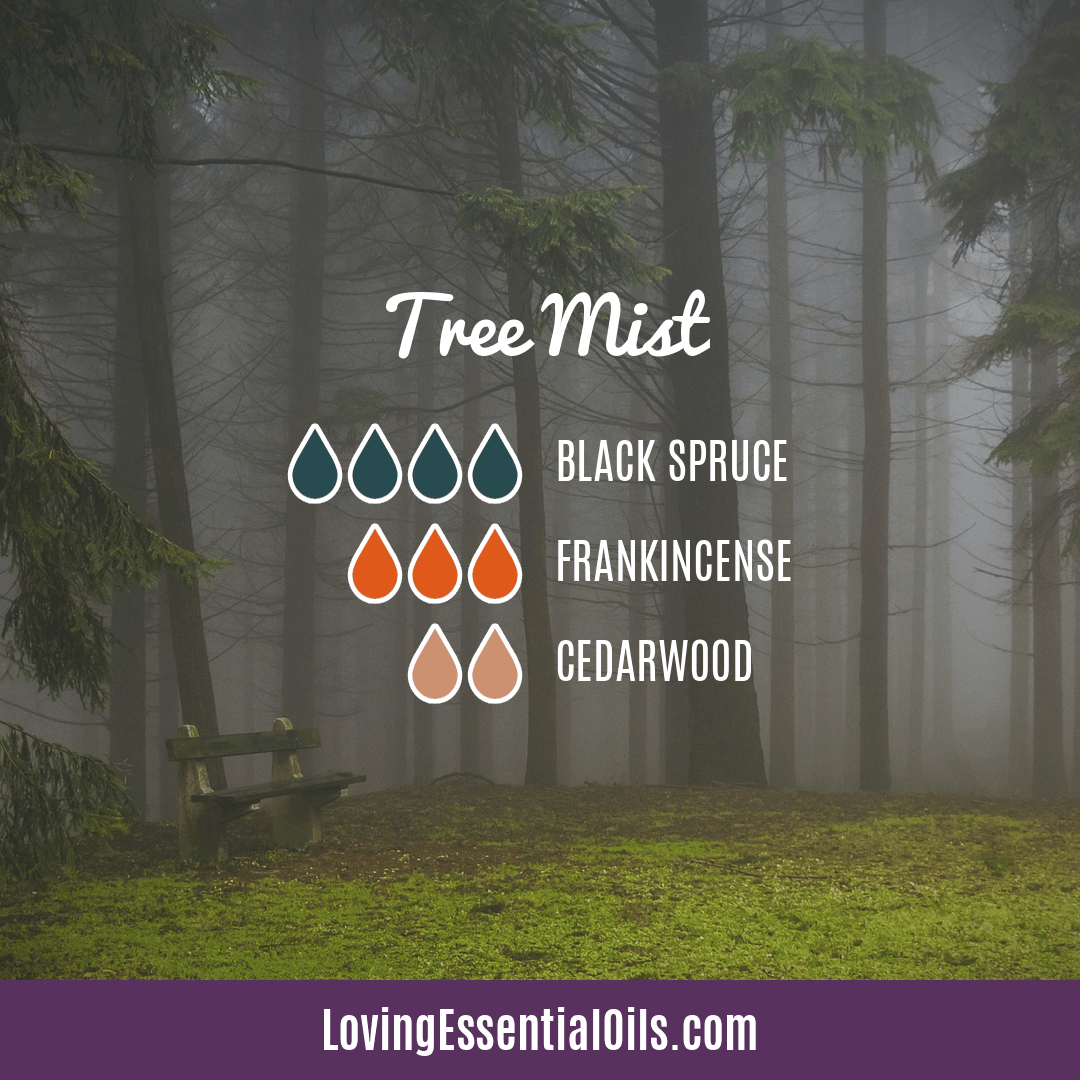
2. Pollen Potion
The classic trio of allergy essential oils (lavender, lemon, and peppermint) with a little frankincense added to the blend to boost synergy.
- 4 drops Lemon essential oil
- 2 drops Lavender essential oil
- 2 drops Frankincense essential oil
- 2 drops Peppermint essential oil

3. Find Relief
Diffuse this blend to calm your allergy symptoms naturally.
- 3 drops Bergamot Oil
- 2 drops Lemon Oil
- 2 drops Tea Tree Oil
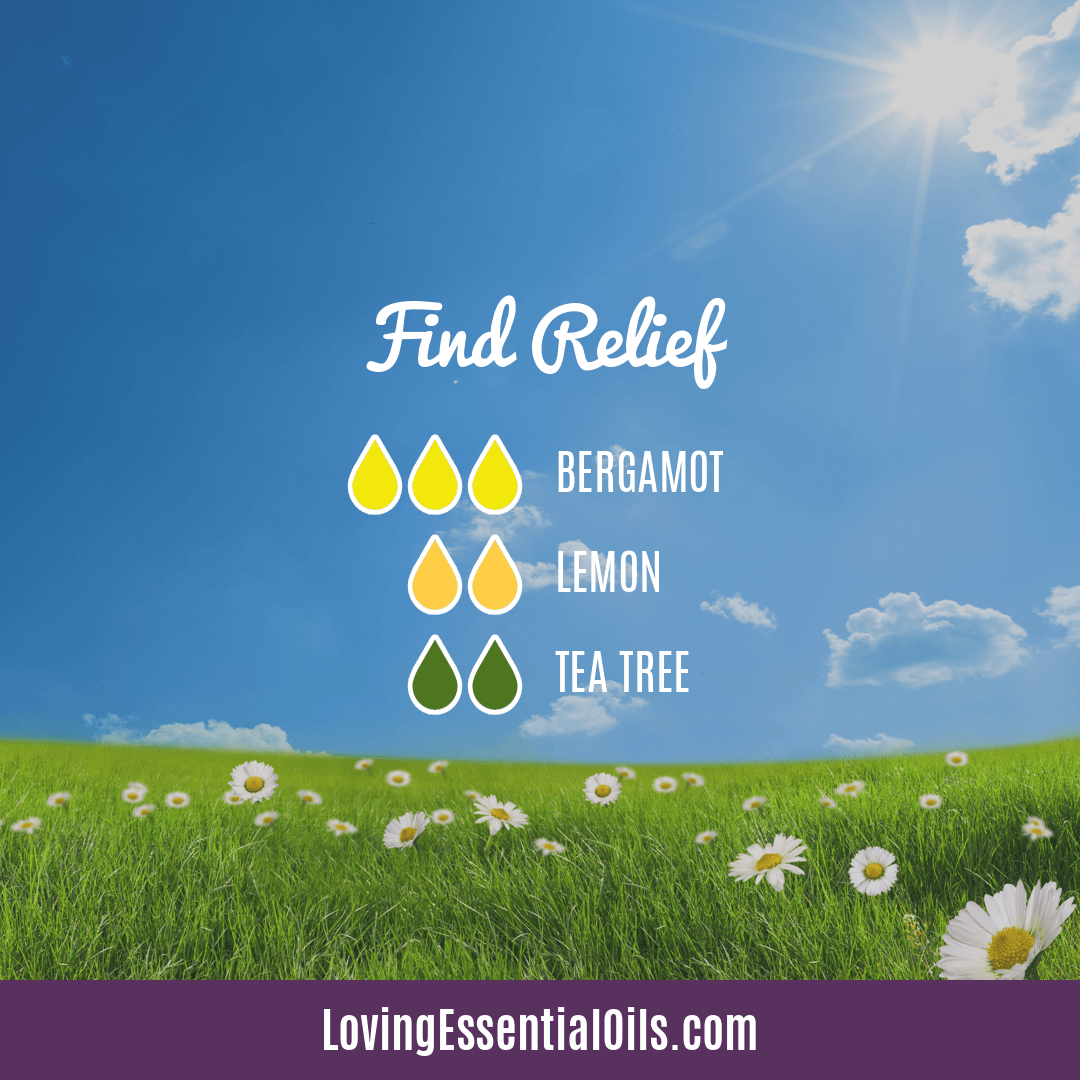
4. Sinus Help
Skip the medicine and try this natural recipe for sinuses and inhale this lovely aroma through your nasal passages.
- 3 drops Lavender essential oil
- 3 drops Cedarwood essential oil
- 2 drops Tea Tree essential oil
- 2 drops Blue Tansy oil
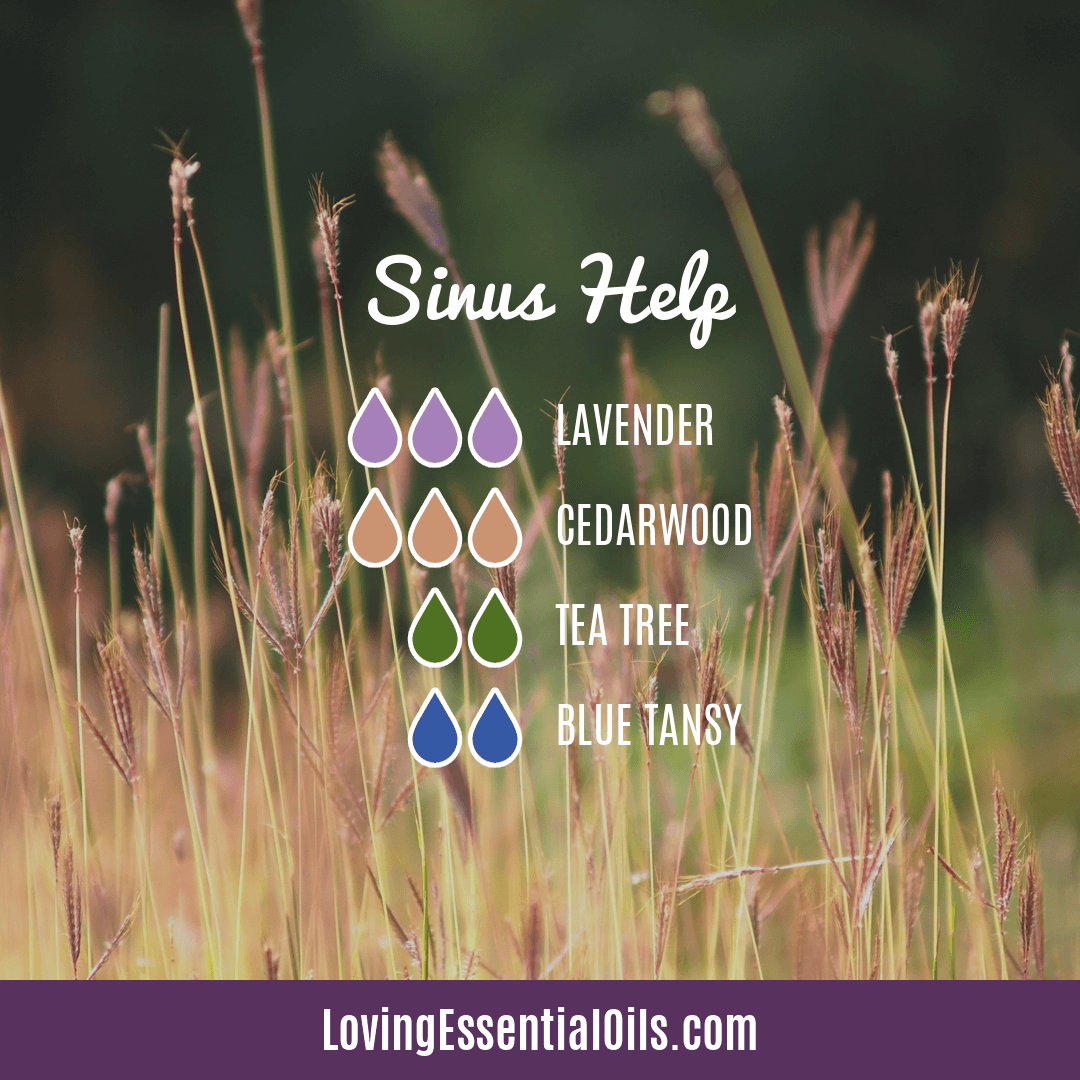
5. Support Breathing
Help combat against seasonal illnesses and chest congestion with this recipe, the amazing aroma will put you in a pleasant mood too.
- 2 drops Lavender essential oil
- 2 drops Cedarwood oil
- 2 drops Tea Tree oil
- 2 drops Roman Chamomile Oil

6. Seasonal Treat Diffuser Blend
This incredible blend works to clear the lungs, reduce congestion, and combat airborne germs.
- 3 drops Bergamot oil
- 2 drops Lavender essential oil
- 2 drops Juniper Berry oil
- 1 drop Peppermint essential oil
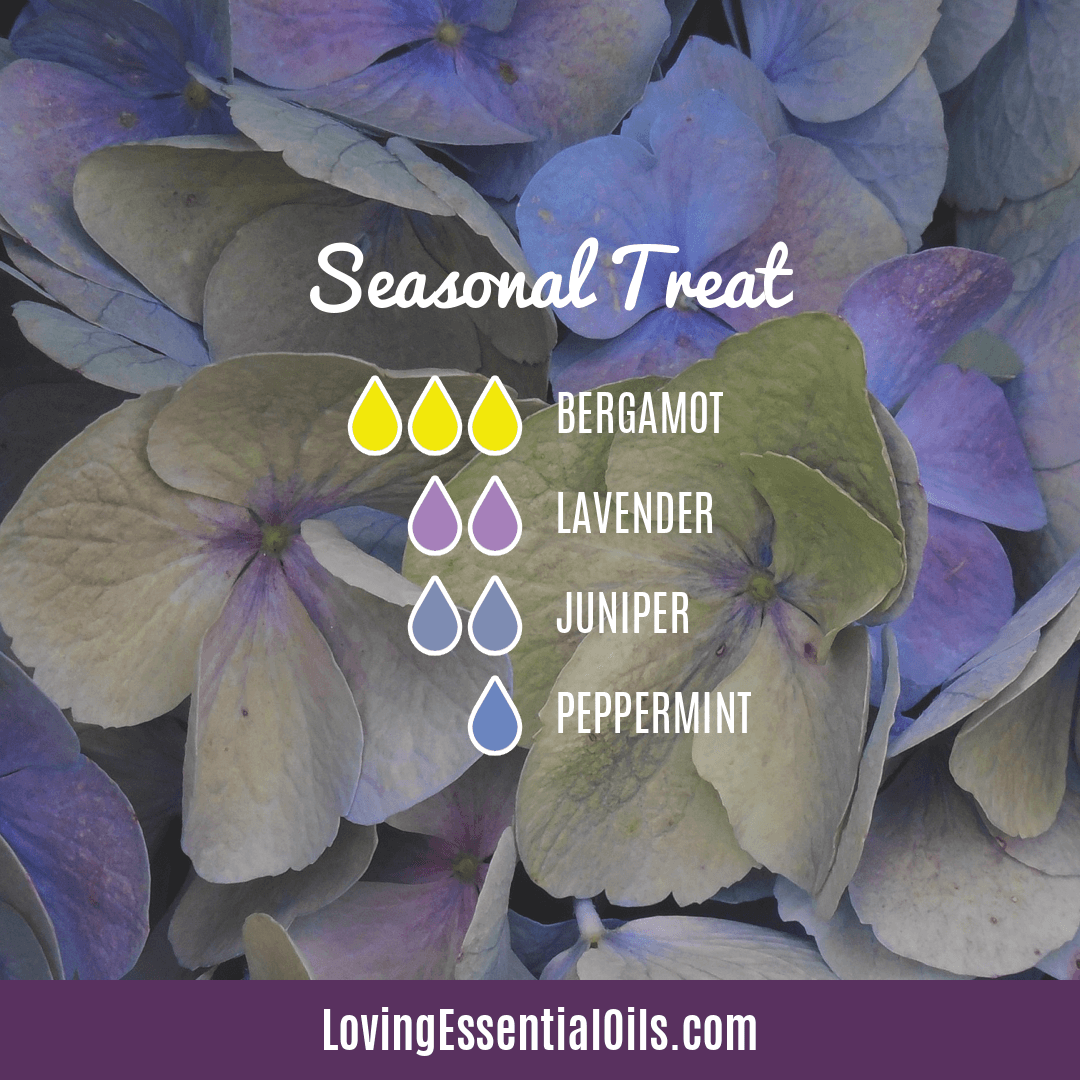
7. Just Breathe
Eucalyptus essential oil is so good at helping us just breathe. The natural components in the oil, especially 1,8 cineole (also known as “eucalyptol”), make it an amazing oil for respiratory support.
- 3 drops Lavender Oil
- 2 drops Eucalyptus Oil
- 2 drops Peppermint Oil
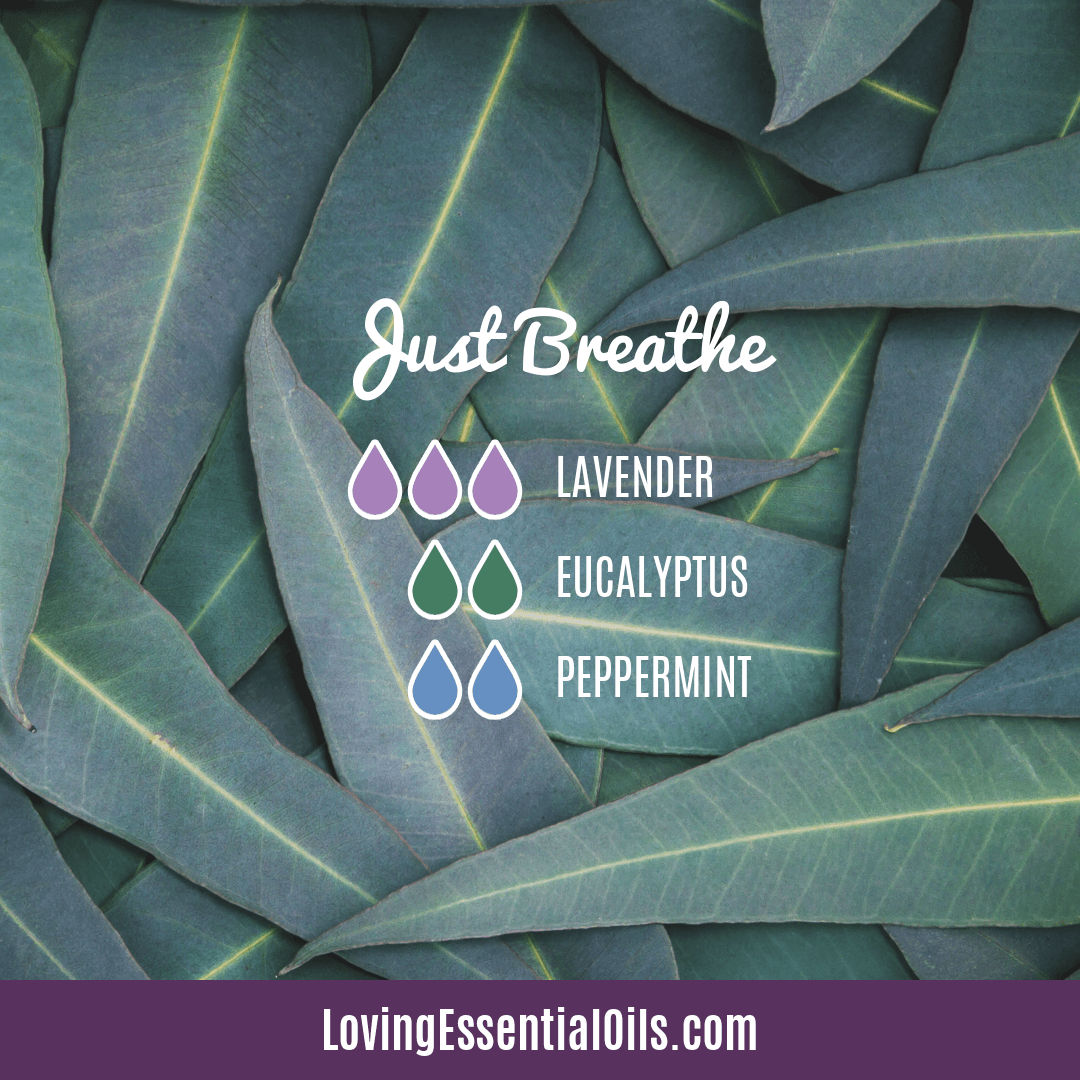
8. Stop Sneezing
Calm down the sneezing and allergy symptoms with this citrusy floral blend.
- 3 drops Lemon essential oil
- 3 drops Roman Chamomile oil
- 2 drops Lavender essential oil
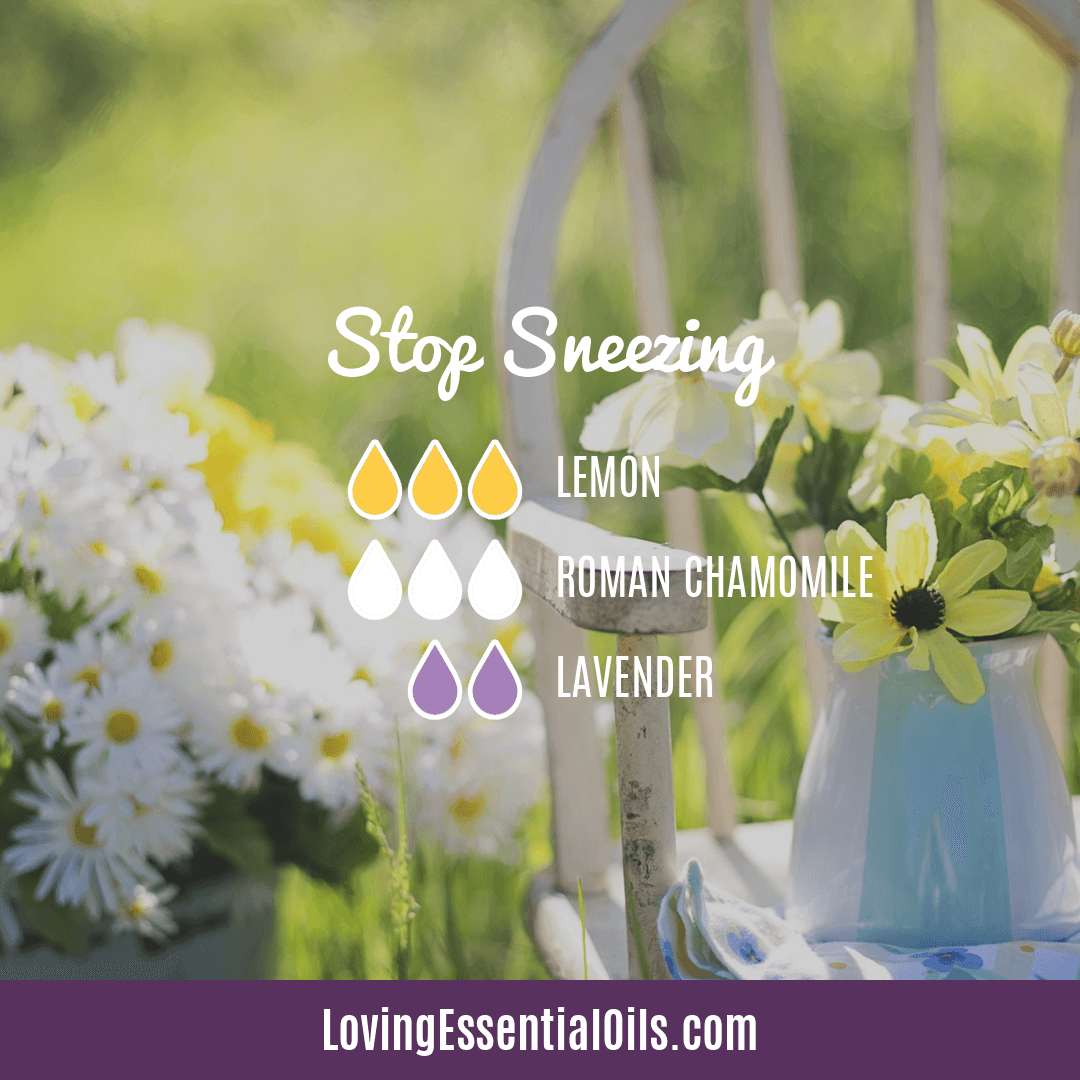
9. Stuffy Nose Blend
Flare-ups of symptoms like nasal congestion, sneezing, itchy eyes are no fun... but this recipe is!
- 2 drops Lavender essential oil
- 2 drops Eucalyptus oil
- 2 drops Lemon essential oil
- 2 drops Pine essential oil
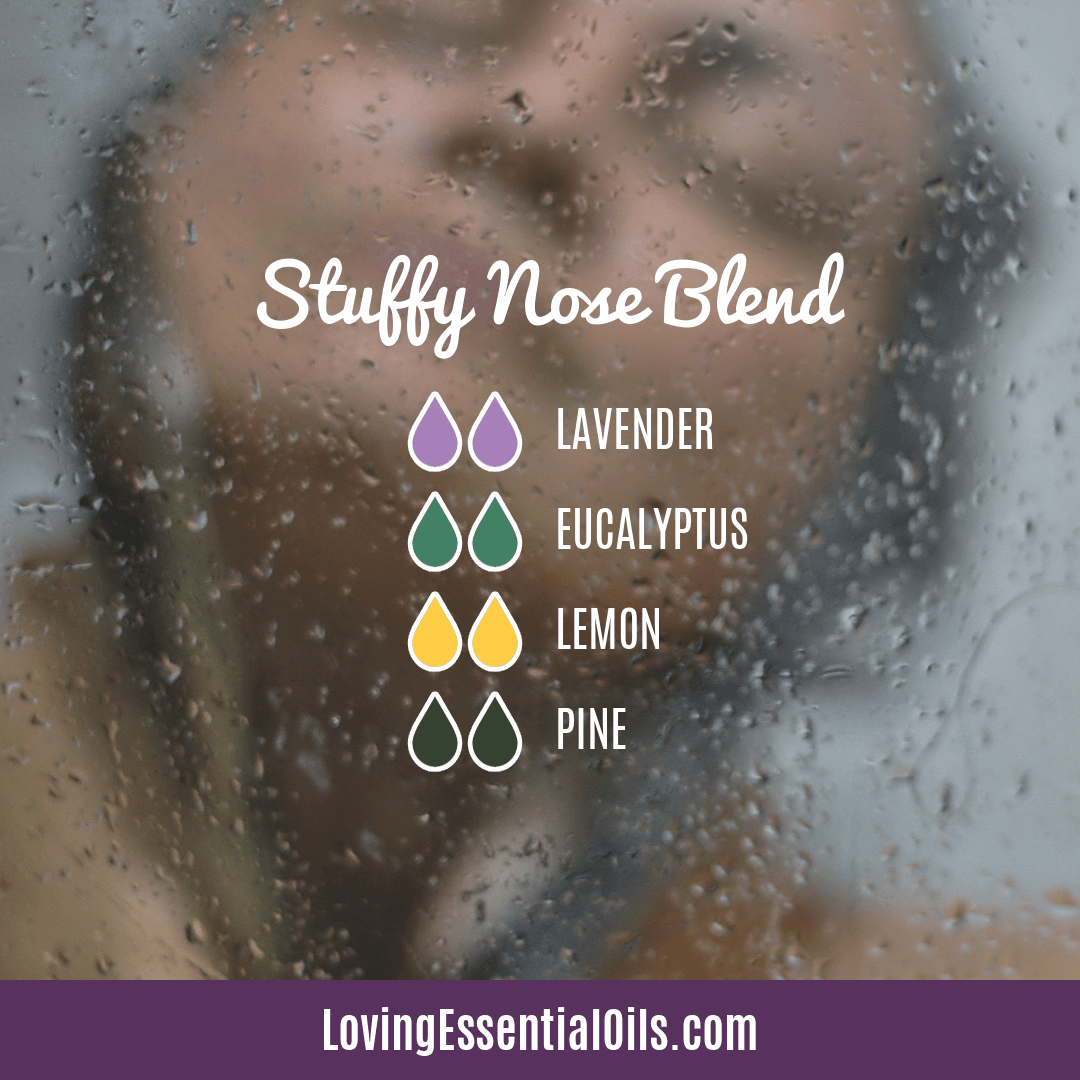
10. Stifle the Sneeze
Got bad allergies every spring? Here is a recipe to stifle the sneeze that comes your way.
- 3 drops Frankincense oil
- 3 drops Sandalwood oil
- 3 drops Ravensara oil
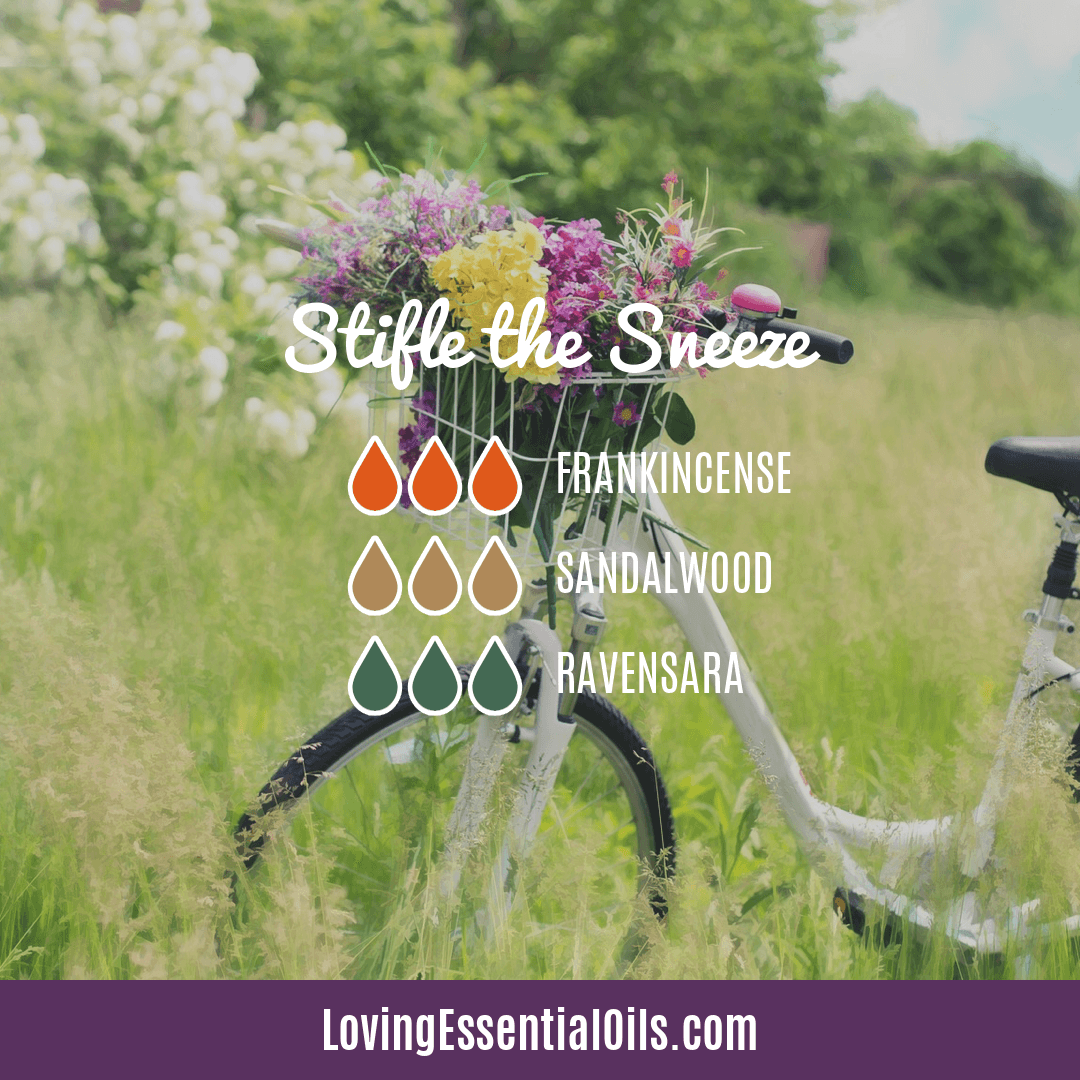
Lavender Essential Oil for Allergy Relief
Lavender essential oil is a popular choice for managing allergies due to its anti-inflammatory properties. When allergies trigger inflammation in the body, lavender oil can help reduce the swelling and discomfort.
By calming the body's response to allergens, lavender oil provides relief from symptoms such as sneezing, itching, and congestion. Additionally, the soothing aroma of lavender can promote relaxation and improve sleep quality, which is beneficial for individuals experiencing allergy-related discomfort.
To use lavender oil for allergies, you can diffuse it in your living space or dilute it with a carrier oil and apply it topically on pulse points for a more targeted effect.
Related FAQs for Seasonal Allergy Diffuser Blends
Can essential oil blends help with seasonal allergies?
Yes, certain essential oils have anti-inflammatory and immune-boosting properties that can help alleviate allergy symptoms such as congestion, sneezing, and itchy eyes.
Which essential oils are best for allergies?
Some of the best essential oils for allergies include lavender, peppermint, eucalyptus, tea tree, and lemon. These oils can help reduce inflammation, clear airways, and support the immune system.
How do I use a diffuser for allergies?
Simply add a few drops of your chosen essential oils to a diffuser filled with water, then turn it on to disperse the aroma throughout the room. You can also mix different oils to create a custom blend that suits your preferences.
Are allergy relief oil blends safe for children and pets?
While essential oils can be beneficial for adults, it's important to use caution when diffusing oils around children and pets. Make sure to choose kid-safe oils and always dilute oils properly before use.
Can allergy essential oils replace medication for allergies?
Essential oils can complement traditional allergy medications, but they are not meant to replace them. Consult with a healthcare professional before making any changes to your allergy treatment plan.
Can diffusing essential oils help with seasonal allergies?
Yes, certain essential oils like lavender, peppermint, and eucalyptus have properties that can help alleviate symptoms of seasonal allergies such as congestion, sneezing, and itchy eyes.
How often should I use allergy essential oil blends?
For best results, it is recommended to use allergy essential oil blends consistently throughout the day during allergy season or whenever symptoms are present. Start with shorter intervals and adjust as needed.
How do I choose the right allergy diffuser blend for me?
Consider your specific allergy symptoms and preferences when choosing an allergy diffuser blend. Research the properties of different essential oils and experiment with blends to find what works best for you.
Safety Guidelines for Using Essential Oils
Diffuse 30 minutes to 1 hour at a time, read more about how long to diffuse oils.
It is best not to apply undiluted essential oils onto the skin. When using essential oils topically on the skin, be sure to dilute with a carrier oil like jojoba oil or sweet almond oil.
Using essential oils can improve a person’s emotional, physical, and mental state. For best results, make sure you use pure essential oils and learn how to use them properly.
People can have different responses to essential oils, you may find what works for one person, doesn't work for you. You can learn more here about what to do when essential oils don't work.
Share on Pinterest
